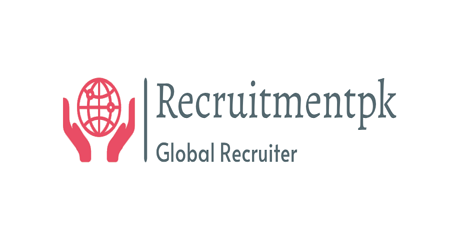In today’s competitive business environment, not only is it a moral imperative but also a strategic advantage to develop a diverse and inclusive workforce. Bias-free hiring opens doors to diverse job opportunities, ensuring equal access for skilled professionals. Time and time again, studies have indicated that diverse groups spur innovation, enhance decision-making, and lead to better financial performance. But when it comes to actual workplace diversity, there is one key roadblock: hiring bias.
Implementing bias-free hiring ensures a diverse and talented workforce, driving innovation and business growth. Bias, conscious or unconscious, skews the hiring process to produce discriminatory patterns and lost talent opportunities in recruiting the most competent. Debiasing the hiring process is paramount to developing an even playfield and making organizations recruit on the basis of talent. The following article examines the nature of hiring bias, its consequences, and efficient solutions to debias its effect in developing a balanced and equitable recruitment process.
Knowing Hiring Bias
Hiring bias is discriminating or favoring candidates based on something other than qualifications, experience, or capacity. Biases can be obvious and deliberate or unconscious and hidden, typically derived from societal prejudices, personal experience, or culture.
Common Forms of Hiring Bias
Affinity Bias: Being inclined towards individuals who have similar background, interests, or characteristics as the hiring manager.
Confirmation Bias: Looking for information confirming preconceived views about a candidate.
Halo Effect: Allowing one positive trait or achievement to tint all other aspects of a candidate’s qualifications.
Horn Effect: The opposite of the halo effect, whereby one negative trait unfairly influences the decision to hire or not hire.
Gender Bias: Preferencing one gender over the other, generally disadvantageous towards women in traditionally male fields.
Ageism: Candidate selection based on age, usually excluding younger or older candidates.
Cultural Bias: Candidate prejudice due to cultural or ethnic origin.
Beauty Bias: Candidate prejudice due to greater physical attractiveness.
The Impact of Hiring Bias
Hiring bias affects organizations and job applicants to an equal extent:
Restricted Diversity: Bias restricts the talent base, leading to homogeneous teams that offer fewer perspectives.
Lost Talent Opportunities: Well-qualified candidates may be avoided based on characteristics unrelated to job requirements.
Damaged Employer Brand: Discriminatory employment practices can harm an organization’s brand, deterring diverse talent.
Lower Employee Engagement: Exclusion can cause disengagement and higher turnover.
Legal and Ethical Risks: Biased employment practices can lead to legal sanctions and reputational harm.
Strategies to Reduce Hiring Bias
Organizations must actively and systematically eliminate hiring bias and establish an equal recruitment process:
1. Promote Awareness of Unconscious Bias
Recognizing and admitting to bias is the first step toward lessening its impact. Conduct training sessions among hiring managers and recruiters to uncover unconscious bias and its impact. The Implicit Association Test (IAT) and similar tools can be used by individuals to become aware of their biases and challenge them.
2. Standardize the Hiring Process
Develop strict and formal recruitment processes with uniform assessment criteria. Use identical interview questions and assessment rubrics to offer balanced and fair analysis.
3. Use Blind Recruitment
Remove identifying information from resumes and applications (e.g., name, gender, age, and photographs) to focus on candidates’ qualifications and skills alone.
4. Apply Diverse Hiring Panels
Employing a diverse set of interviewers minimizes personal bias and contributes to an exhaustive evaluation of candidates.
5. Leverage Technology and Data
Harness AI-based applicant tracking systems (ATS) and recruitment tools to screen applicants based on unbiased factors. Regularly audit such tools to maintain them free from bias.
6. Focus on Skills and Competencies
Shift away from traditional credentials (e.g., education and past job titles) to competency-based hiring. Utilize skills tests, work samples, and behavioral interviews to accurately assess candidates’ skills.
7. Craft Inclusive Job Descriptions
Adopt the use of non-gender language and remove employment jargon from job postings to entice a broad, diverse group of applicants. Indicate the company’s commitment to diversity and inclusion.
8. Set Diversity Objectives and Track Progress
Set quantitative diversity and inclusion goals and review hiring statistics regularly. Hold the hiring units accountable for accomplishing those goals.
9. Foster an Inclusive Work Culture
Establish a culture of diversity and inclusivity. Engage in open communication, provide diversity training, and involve all employees and make them feel valued and appreciated.
10. Partner with Inclusive Recruitment Agencies
Hiring organizations can collaborate with agencies like Recruitmentpk, which has a track record of preventing biased recruitment processes. This helps organizations build diverse teams and minimize hiring prejudice.
How Recruitmentpk Helps Prevent Hiring Bias
Recruitmentpk is committed to fostering inclusive and unbiased recruitment. Here’s how they help foster inclusive recruitment:
1. Inclusive Talent Sourcing
Recruitmentpk employs creative methods to find exceptional talent with varying backgrounds, bringing in quality candidates.
2. Equitable and Systematic Interviews
Their systematic interview guides and equitable evaluation procedures remove bias, enabling unbiased hiring decisions.
3. Diversity Consulting and Training
Recruitmentpk offers training and consulting to help organizations identify and eliminate bias during the hiring process.
4. Data-Driven Recruitment Insights
Through the use of data analytics, Recruitmentpk provides insightful information on recruitment trends and diversity progress.
5. Global Talent Network
With a vast professional network, Recruitmentpk connects organizations with quality talent of varied cultural and professional backgrounds.
Conclusion
Eliminating hiring bias is crucial to developing diverse, high-performing, and inclusive teams. Building awareness, structuring recruitment, and leveraging technology are mechanisms whereby organizations can make equitable and fair hiring a reality. In addition to improving recruitment quality, these practices ensure that employer brand and workplace culture are enhanced.
Recruitment firms like Recruitmentpk are leading the way in providing inclusive hiring. Through their unbiased hiring services, they help companies recruit the best staff, reduce recruitment bias, and achieve diversity objectives.
To learn how Recruitmentpk can help your organization develop an inclusive workforce. For more recruitment advice, visit https://recruitmentpk.com/.

